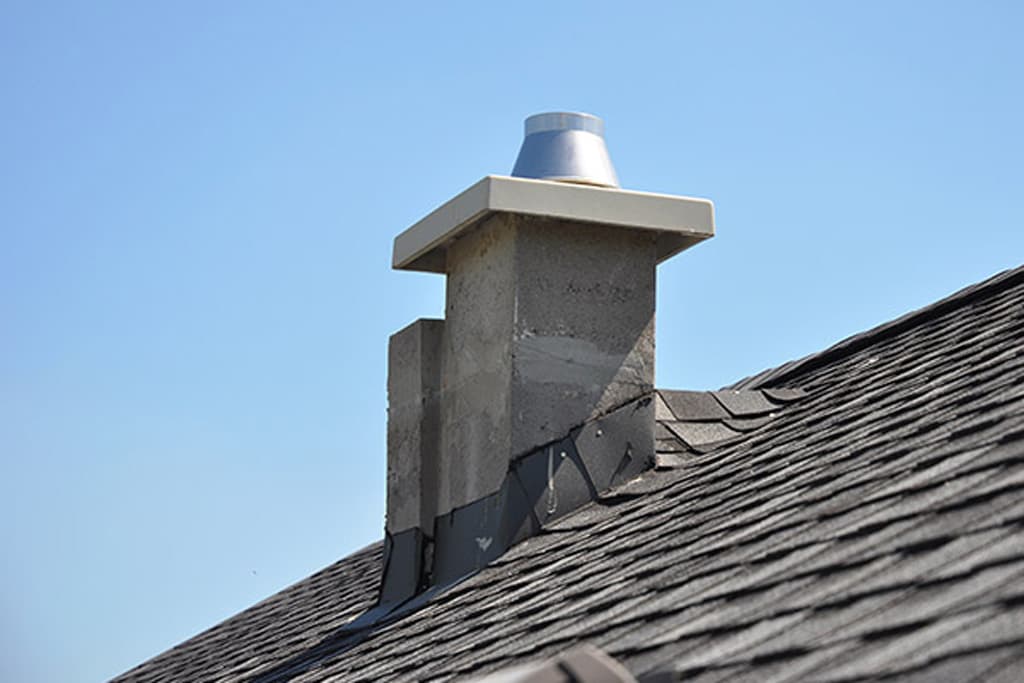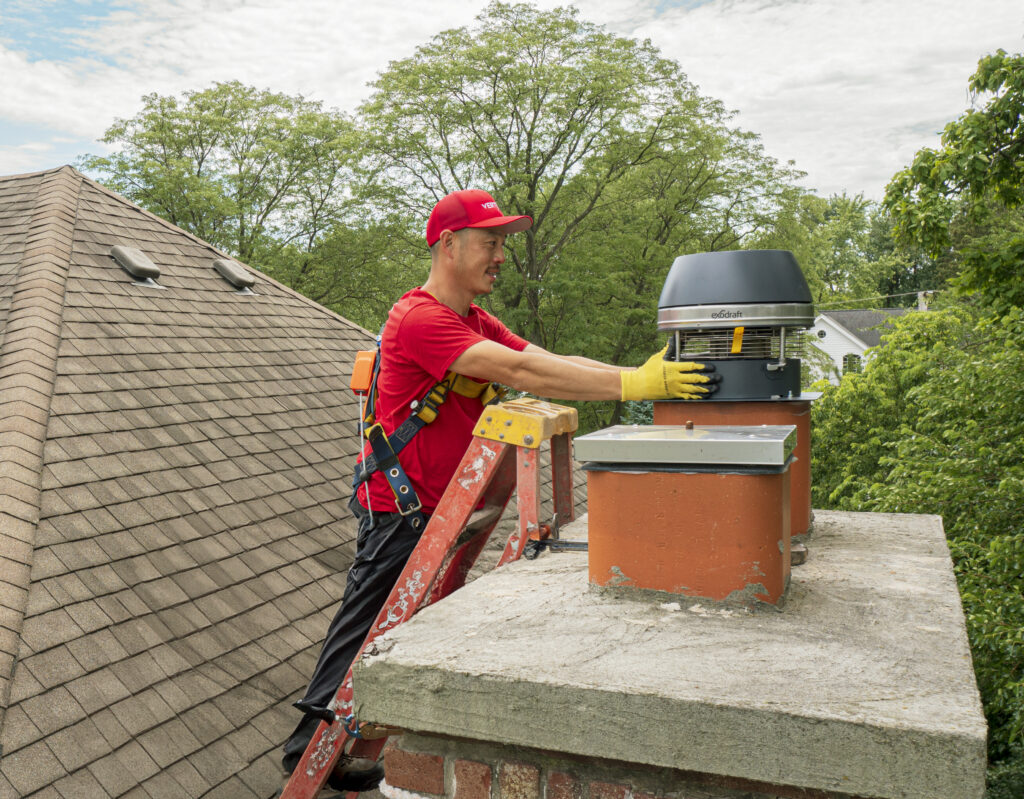
Chimney liners serve a very important purpose in your fireplace. Liners help accomplish what most masonry chimneys are incapable of doing on their own - keeping the heat from the flue gases inside the chimney and not leaking into the exterior of your home.
Furthermore, chimney liners also are crucial for fire safety. The liner prevents the chimney from overheating and scorching nearby combustibles which could cause a fire inside the home.
As a result, chimney liners are incredibly important in making sure you and your family stay safe. Most chimney liners only make it 15 to 20 years, given the amount of abuse they endure. The time frame does vary based on the type of chimney liner, as well as the amount of use.
Let’s dive into some more specifics in order to learn more about when it's time to replace your chimney liner.
About Chimney Liners
Chimney liners are also referred to as a flue lining. It is defined as a “clay, ceramic, or metal conduit installed inside of a chimney, intended to contain the combustion products, direct them to the outside atmosphere, and protect the chimney walls from heat and corrosion.”
It is important to mention that building codes vary from state to state, as well as local municipality standards. However, the general theme is that chimney liners are required in modern buildings. It has been that way for over a century now as most fire codes mandate chimney liners.
Additionally, chimney liners require inspection once a year. According to the Chimney Safety Institute of America (CSIA), fireplaces need to have the liner cleaned to about ⅛” of creosote and/or soot buildup.
As a result, the National Fire Protection Association (NFPA) has just went ahead and recommended that you get your chimney inspected and cleaned at least once every year. Some homeowners opt to clean the fireplace twice a year if they use it heavily, and as the primary means for heating inside the home.
Purpose of a Chimney Liner
Chimney liners serve three very important functions:
- Liners protect the house from heat transfer to combustibles. You are obviously dealing with a ton of heat regarding a fireplace. So why mess around? If you want to eliminate fire risks then you need to make sure the chimney liner is in good condition. Its primary purpose is to prevent house fires. Tests with unlined chimneys demonstrated that combustibles can get started on woodwork in only 3 ½ hours of use.
- Liners protect the masonry from the corrosive byproducts. Flue gases are extremely dangerous for a number of reasons. In addition to posing a serious health risk to you and your family they are also damaging to the masonry. Carbon monoxide is lethal and can leak into living areas if you are not careful. The gases are so strong they can penetrate brick and mortar, and eat away at critical mortar joints. The result is not only an increased fire danger and health risk but also long-term damage to the entire structure of the chimney.
- Liners provide the right sized flue for optimum efficiency. If the flue does not fit or perform properly the gas or oil furnace, as well as modern wood stove will not function right. A draft is generated by the chimney and necessary to produce combustible air in the fireplace. If the liner is incorrectly sized it can lead to excessive creosote buildup which also contributes to carbon monoxide.
Chimney Liners That Pass Inspection

The National Bureau of Standards previously determined in the 1940s that chimney liners are essential to keeping a building up to code and ensuring fire safety. Unlined chimneys, or chimneys with a poor quality liner are considered unsafe and a major fire hazard.
As a result, your goal is to make sure your chimney liner passes inspections each year. You can keep up with maintenance by scheduling a fireplace cleaning at least once a year. Regardless of what you try to do to keep your chimney in excellent condition - the liner is bound to wear down.
Average Lifespan of Chimney Liners
The average lifespan of a chimney liner is 15 to 20 years. After two decades you will probably need to get the entire liner replaced to make sure it's still up to code and not a serious fire risk.
Though the general time frame is 15 to 20 years it's important to note that there are factors that can shorten the lifespan or improve it. It does depend on the type of chimney liner. Stainless steel flue liners have a much longer lifespan at about 15 to 20 years compared to clay tile liners and cast-in-place liners.
Meanwhile, some of the cheapest chimney liners may need substantial repairs or a complete replacement in as little as five years.
There is also the factors on how well the chimney has been treated. If you just bought an old home with a traditional fireplace then there's a fair chance it has been neglected. You have no idea when was the last time it was used or even inspected.
You also don’t know if the fireplace has been regularly maintained and cleaned at least once a year. So new homeowners of a structure with a fireplace are sometimes in for a rude awakening.

Types of Chimney Liners & Average Lifespan
Now that you know the type of chimney liner can substantially dictate how long it takes before you need to replace the liner, let's look at the different styles in more detail:
- Clay Tile Chimney Liners: The most common type of masonry chimney liner. Clay tiles are inexpensive to install and readily available. However, there are some drawbacks to how they absorb and distribute heat. Average lifespan ranges drastically from 5 years to 15 years.
- Metal Chimney Liners: The most common types of metal used in a fireplace chimney are stainless steel and aluminum. Both are lightweight which helps with the installation. They are considered extremely safe and durable. However, metal liners also cost a lot more compared to clay tile. The average lifespan is approximately 15 to 25 years.
- Cast-in-Place Chimney Liners: Cast-in-place liners are traditionally built with cement. It is a difficult liner to install and therefore very expensive. Cast-in-place liners also improve the overall structural soundness of the chimney. The average lifespan of the liner is 50 years if you take care of it properly.
Chimney Liner Replacement is the Clear Choice
If you inherited a bad chimney liner you may have no choice but to replace it immediately. However, depending on the type of liner you select you can depend on 15 years of service, potentially more if you pay for high-quality clay tile or cast-in-place concrete liners.
A certified CSIA chimney professional can inspect the conditions of your fireplace and let you know if any repairs or complete replacement is necessary.
When it comes to chimney liner replacement, the clear choice is Vertical Chimney Care. We have served Chicago and suburbs for over 30 years. Our unbelievable value, support, and service keeps homeowners happy with a chimney liner replacement from Vertical Chimney Care. Contact us today to speak with a product specialist!
